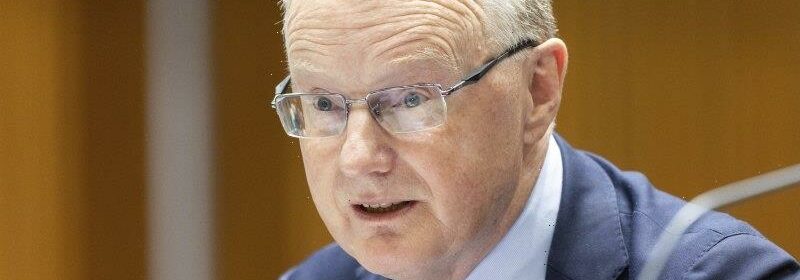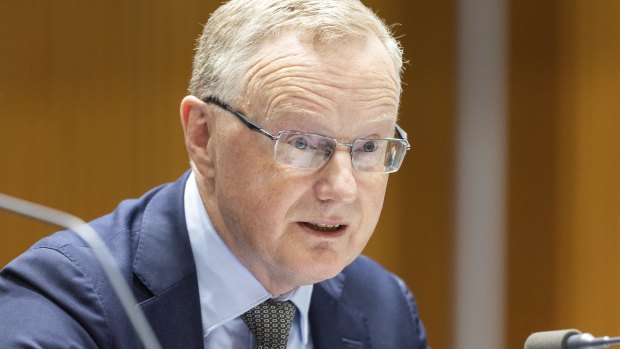Reserve Bank forecasts see-sawing interest rates as economy worsens

Interest rates will swing up and down more often to deal with increasingly erratic inflation over coming years, with Reserve Bank governor Philip Lowe warning climate change, an ageing population, the breakdown of supply chains and the overhaul of the energy grid will all put upward pressure on prices.
As the OECD forecast Australia’s growth rate to more than halve over the next two years due to the turmoil unleashed by the war in Ukraine, Lowe said the federal budget bottom line would have to sharply improve to ensure the country could move swiftly to deal with the economic challenges ahead.
Reserve Bank governor Philip Lowe has warned four large supply-side shocks to the global economy will make inflation, and hence interest rates, more variable in the years ahead.Credit:Alex Ellinghausen
The Reserve Bank is expected to lift interest rates to a 10-year high of 3.1 per cent at its December meeting as it seeks to rein in inflation, forecast to reach 8 per cent by year’s end.
Strong domestic demand, loose monetary policy settings earlier in the year, government spending and handouts have combined with the spike in global energy prices and supply chain issues to push inflation well above the RBA’s 2-3 per cent inflation target.
Lowe, speaking in Sydney on Tuesday night, said the events of the past year had revealed supply-side issues were going to make inflation more variable, which would then make the setting of interest rates even more difficult.
He said climate change, which would disrupt food and commodity prices, the ageing of the globe’s working population, the post-COVID shift towards deglobalisation as countries tried to avoid supply-chain breakdowns and the money needed to upgrade energy systems would all feed into fluctuating rates of inflation.
“All four of these supply-side developments are first-order issues that are likely to affect the environment for Australian business over the years ahead,” he said.
“They are also likely to affect the inflation dynamic here and elsewhere, leading to more variability in inflation from year to year.”
Ahead of COVID-19, inflation in Australia and across the globe had been muted. The Reserve Bank came under criticism for constantly falling short of hitting its inflation target.
Lowe said as inflation moved around more often, it would be “increasingly problematic” for central banks to hold inflation with narrow target bands.
That meant governments had to get their budgets in order and drive policies that lifted productivity and ensured the economy was flexible enough to deal with rapid changes.
“In a world of more frequent supply shocks, we will be better off if there is flexibility in our labour and product markets so that we can respond quickly and effectively,” he said.
“This includes flexibility in terms of fiscal policy, which requires maintaining a strong underlying structural budget position.”
The October budget showed Treasury expects the federal budget to remain in structural deficit – which excludes unusual flows of income such as high commodity prices – until at least 2032-33.
Lowe made the comments ahead of the release of the OECD’s global economic outlook, which points to recession levels of growth in the United States and much of Europe through 2023. Growth among developed nations is expected to tumble from 2.8 per cent in 2022 to just 0.8 per cent next year.
The invasion of Ukraine has contributed to a surge in inflation around the world.Credit:AP
The Paris-based think tank is forecasting the Australian economy to expand by 4 per cent this year before sharply slowing to 1.9 per cent in 2023 and then 1.6 per cent the year after that.
Growth will slow as consumers respond to higher interest rates, with household spending tipped to tumble from 7 per cent this year to just 2 per cent in 2024.
Despite the slowdown, unemployment is tipped to edge down to 3.5 per cent next year from 3.7 per cent before increasing to 4 per cent in 2024.
The OECD said the RBA, which meets for the last time this year on December 6, will have to keep lifting interest rates while cautioning the Albanese government against handouts.
It acknowledged there were several risks to the Australian economy, particularly if the RBA had to push interest rates up higher for longer to deal with inflation.
“More persistent price pressures could cause a stronger decline in real incomes and more aggressive policy tightening by the central bank. Falling house prices may also further weaken residential construction and household spending,” it said.
Treasurer Jim Chalmers said the government was using the budget, which this year is expected to show a deficit of $36.9 billion, to restrain public spending and keep a lid on inflation
“The government takes seriously the OECD’s warning when it comes to making sure that fiscal policy doesn’t make the job of monetary policy harder – that’s why our budget was carefully calibrated to deal with the inflation challenge in our economy,” he said.
Cut through the noise of federal politics with news, views and expert analysis from Jacqueline Maley. Subscribers can sign up to our weekly Inside Politics newsletter here.
Most Viewed in Politics
From our partners
Source: Read Full Article

